In July, my Spiderbeam mast was sideswiped by the winds from a thunderstorm that took out the mast and put an abrupt end to my Spiderbeam – a great antenna I’ve enjoyed for several years. Someday I plan to replace the Spiderbeam once I have a location I can erect a tower. In the meantime, I wanted a decent DX antenna I can use while I’m developing my new multi-band antennas to continue operating. I ended up choosing the GAP Titan DX antenna.
I chose the GAP Titan as it’s received overall positive reviews and has been in use for decades. I wanted a vertical antenna with low angle radiation for DX, ideally, one that didn’t require a large radial field, and the Titan looked like it filled the bill. I have an OCF dipole that supports 80, 40, 20 and other bands via tuning, but other than 40 meters it seems like yet another compromise multiband antenna, except on 40.
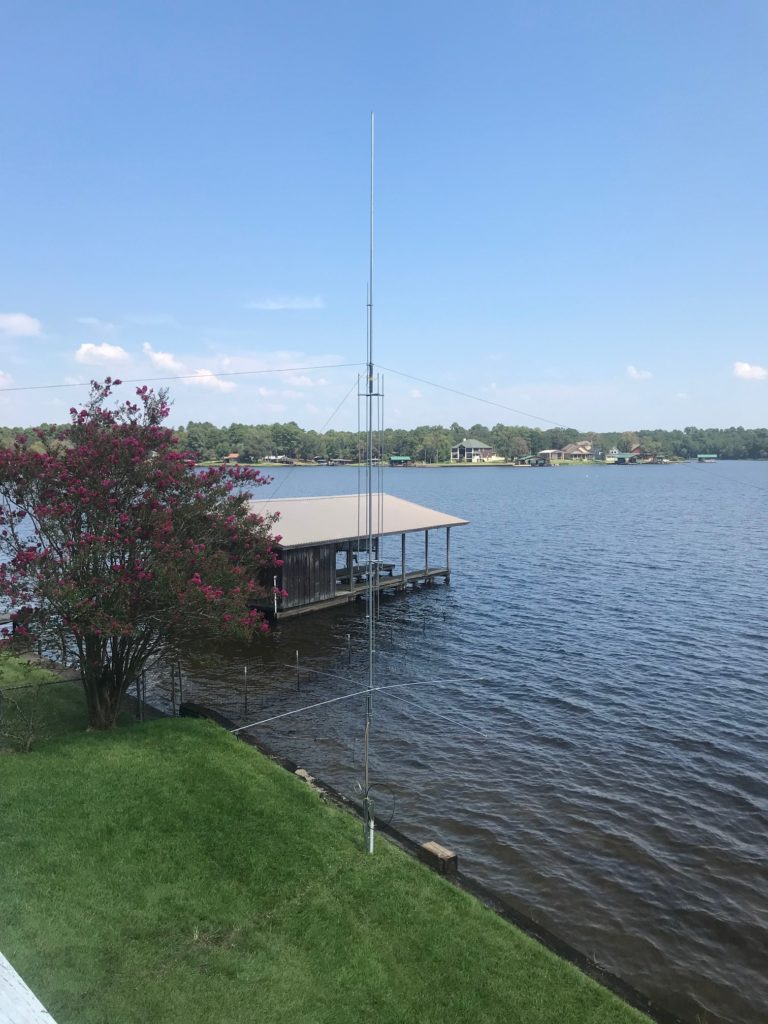
The Titan DX is installed at the water’s edge, as can be seen above. It’s mounted about 5′ above ground level. The 40 meters counterpoise aluminum spreaders can be seen toward the very bottom of the antenna. Above that, the various tuning elements for the various bands are gathered around the middle of the antenna. The topmost vertical element sticks up above the top edge of the picture. The entire antenna system is about 38′ tall. At the bottom, it’s mounted on a vertical tilt plate that makes working on the antenna easier to deal with, should that be required in the future.
It took me about 4 hours to build the antenna by myself, and only about 20 minutes to get it mounted and erected, with several helpers. The instructions were okay but not great. Fortunately, there’s a nice community with lots of advice available for GAP antenna owners, which I made full use of.
After correcting one error I made during the construction of the counterpoise, I was delighted to see the VSWR’s were as advertised. I’m including images of those VSWR readings below (so I have a place to track them for future reference).
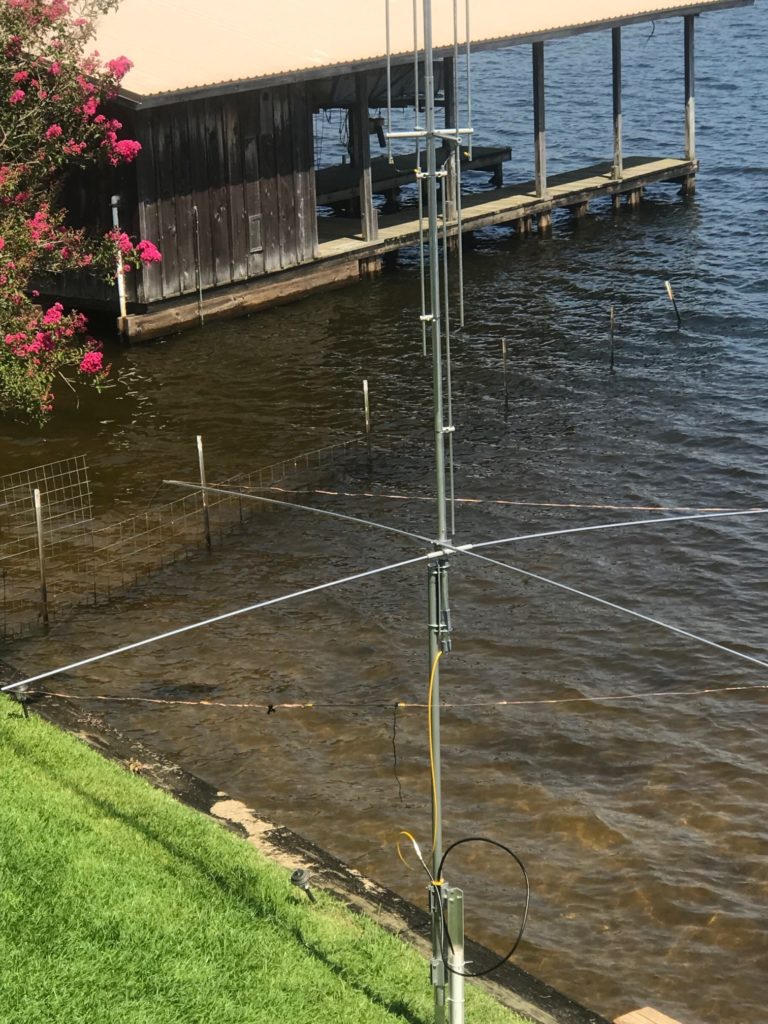
If I had it to do over again, I would’ve applied Penetrox to all of the aluminum joints to improve their connectivity. However, given the VSWR readings, it appears the RF connections are all just fine without it.
Early testing results on the bands which are active have been okay to excellent. Of course, I’m typically running some power, too, so that always helps. I will post more specific results once I’ve had the antenna operational for some time. Note these antenna readings are on the other end of a 100′ coax cable (LMR 400).
Clearly, there’s further tuning and optimization that can be done on a few of these bands… an exercise for another day perhaps. For now, the out of the box VSWR’s are good enough to operate without a tuner.

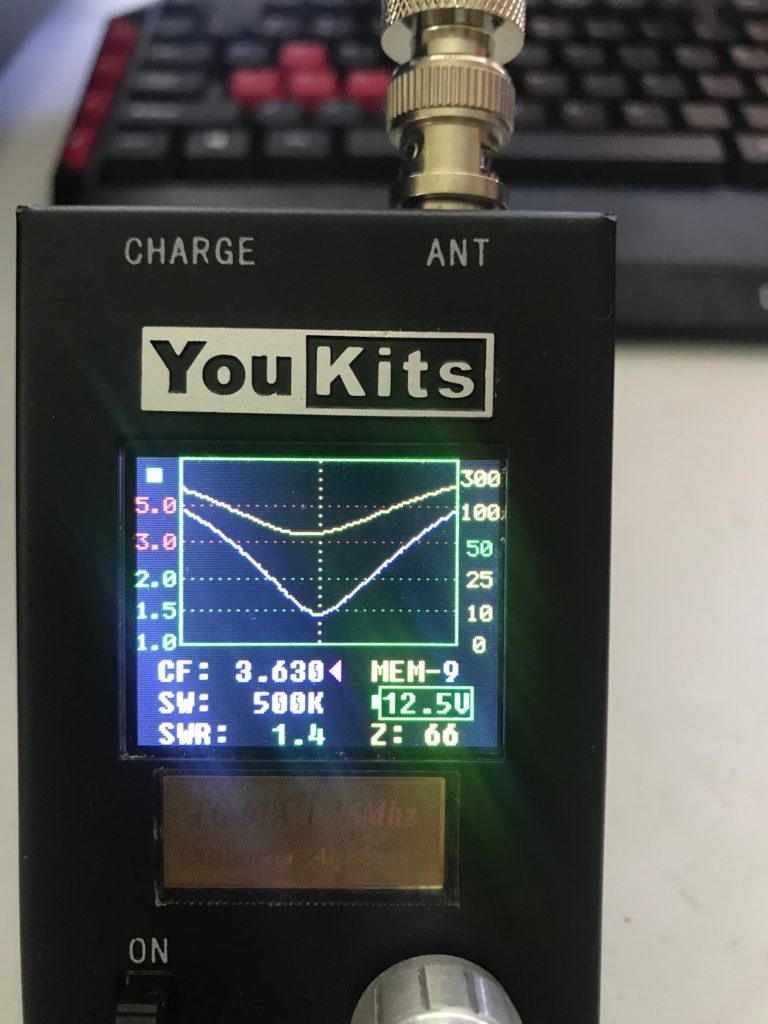
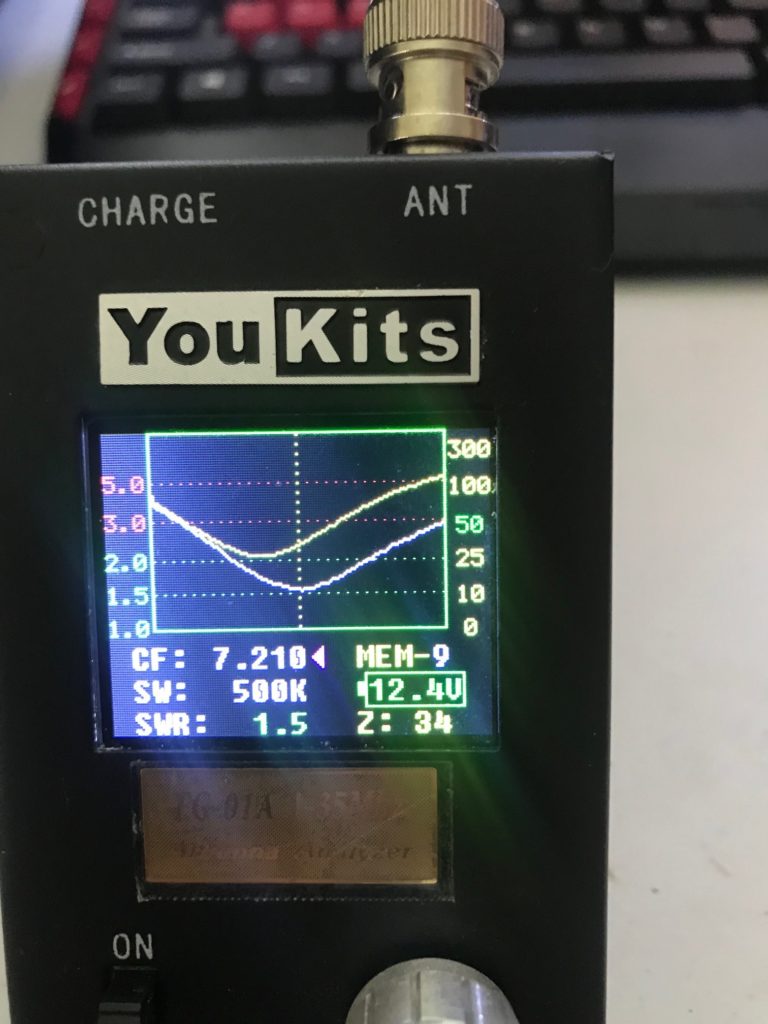
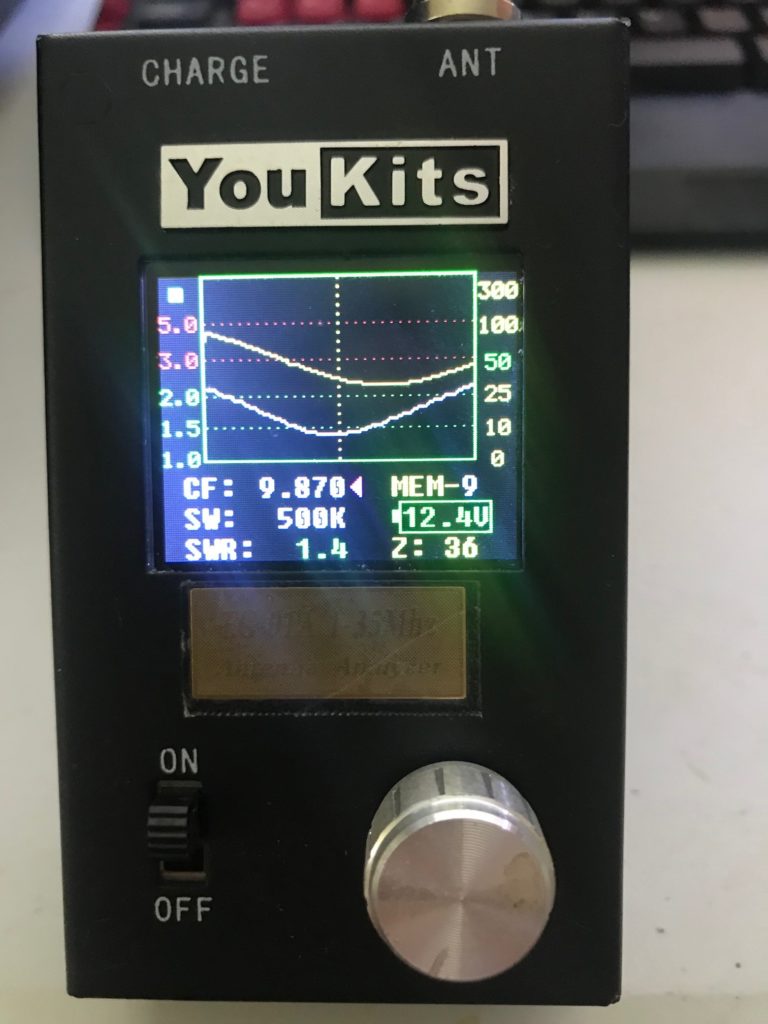
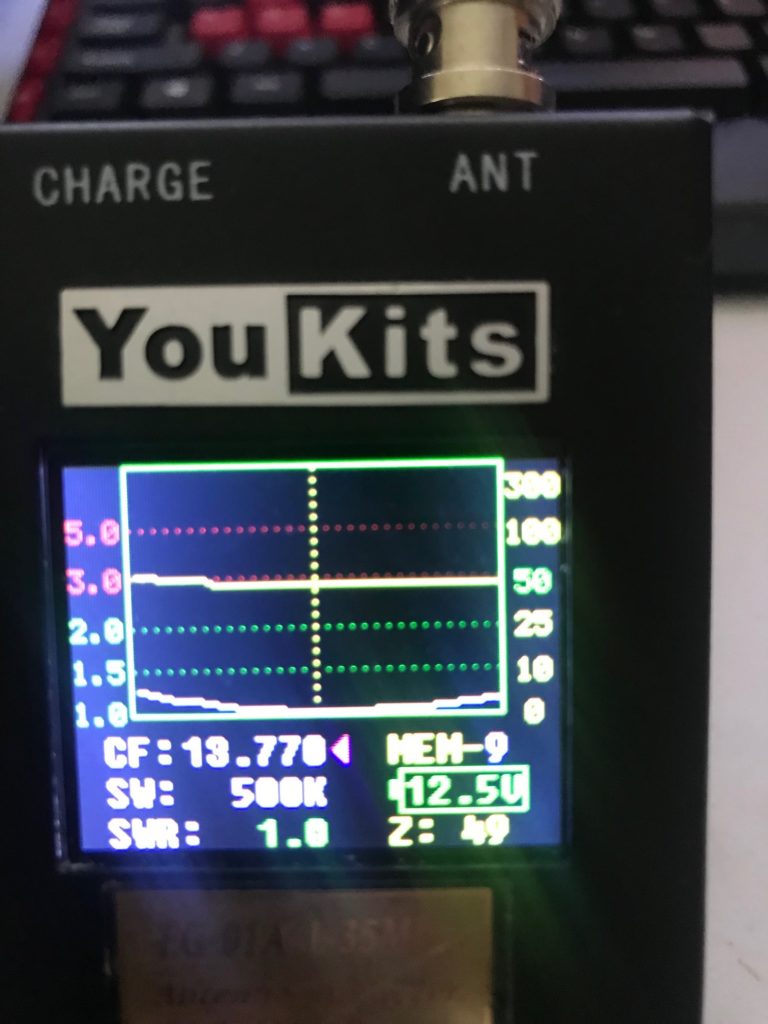
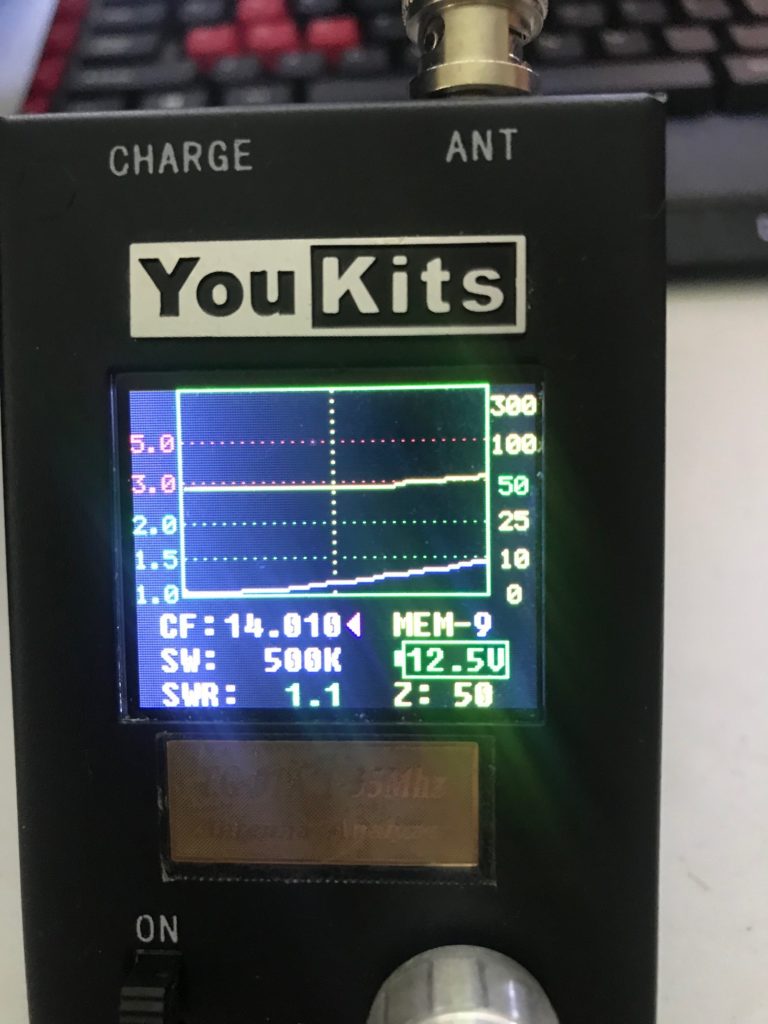
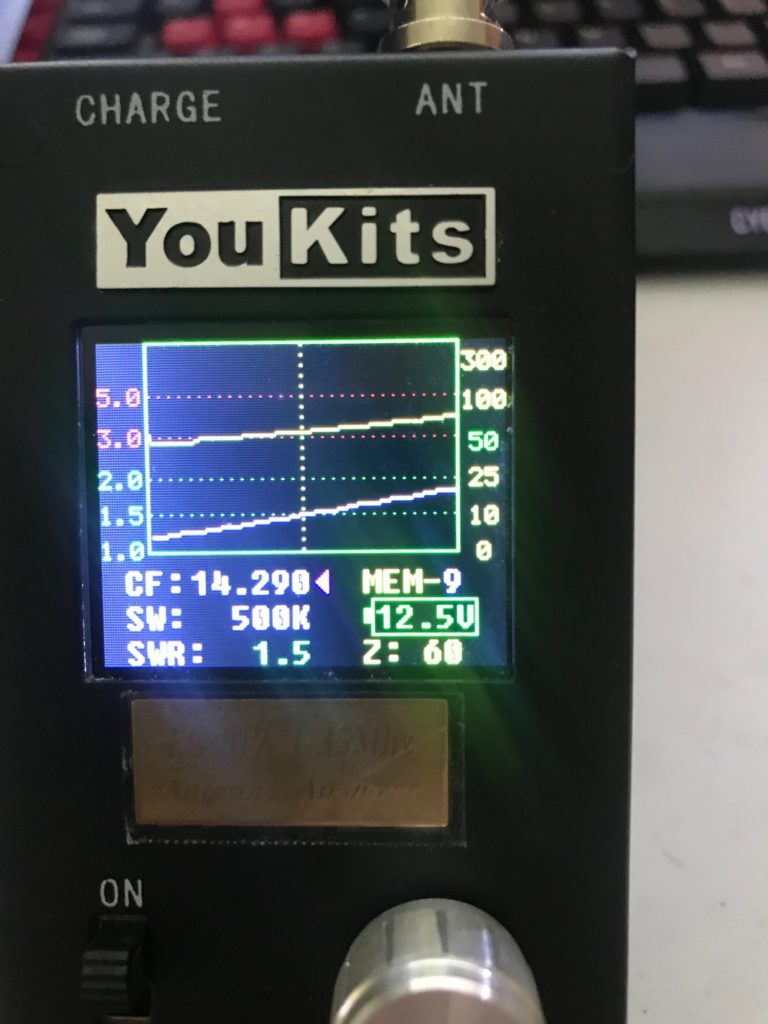
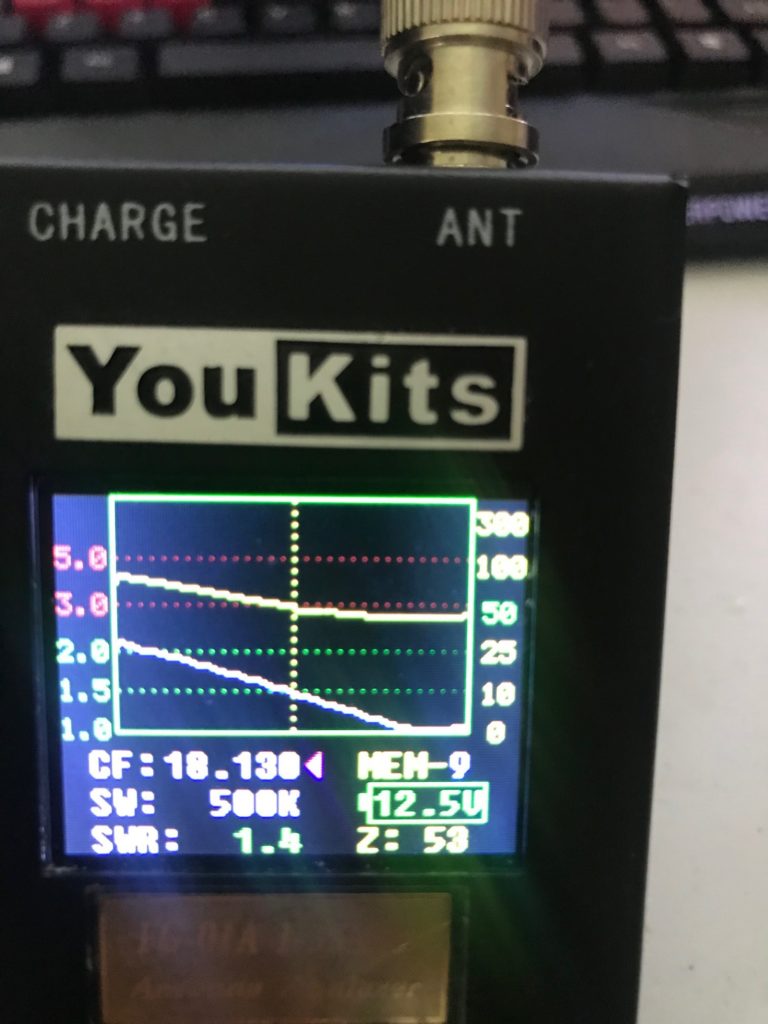
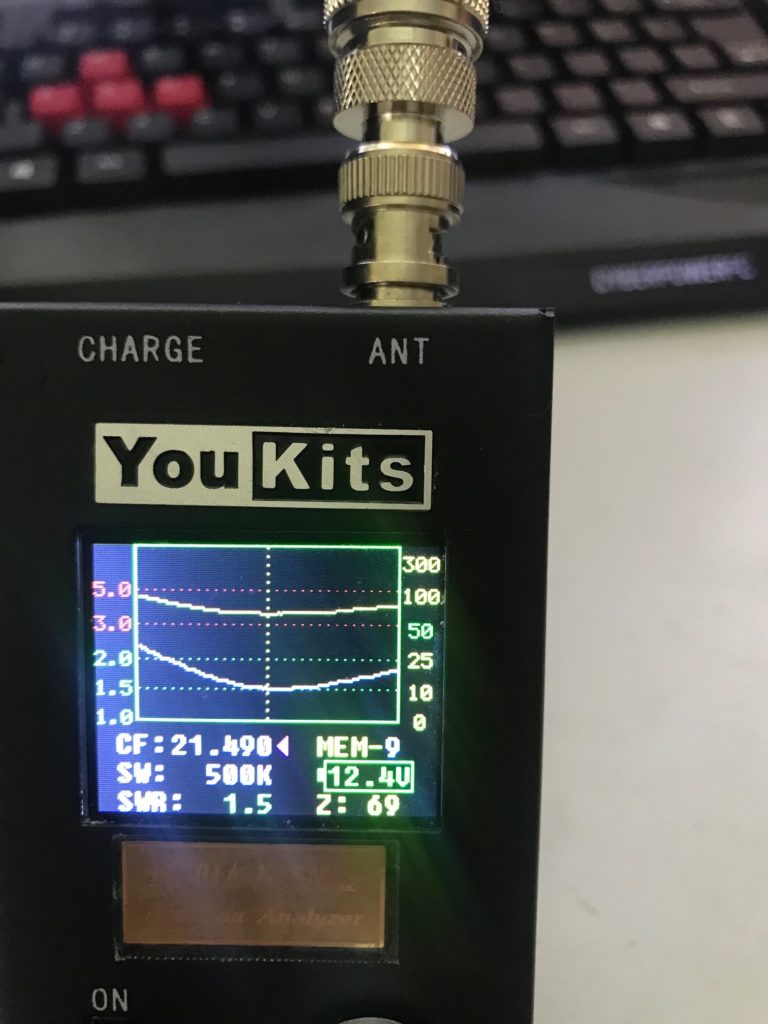
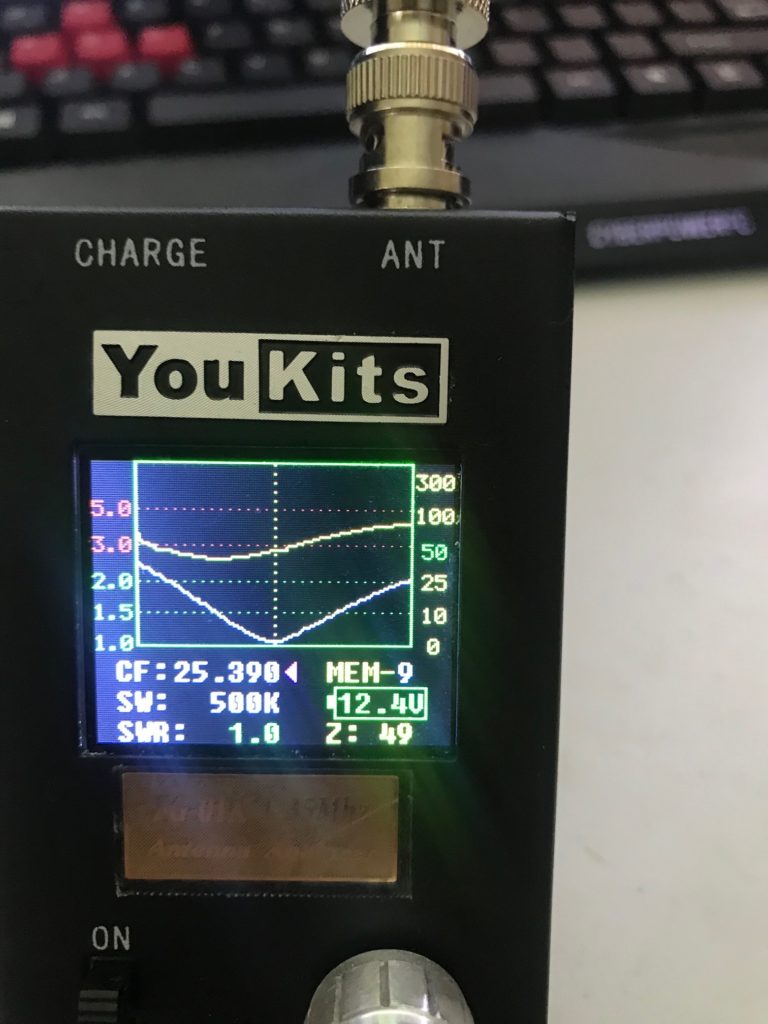
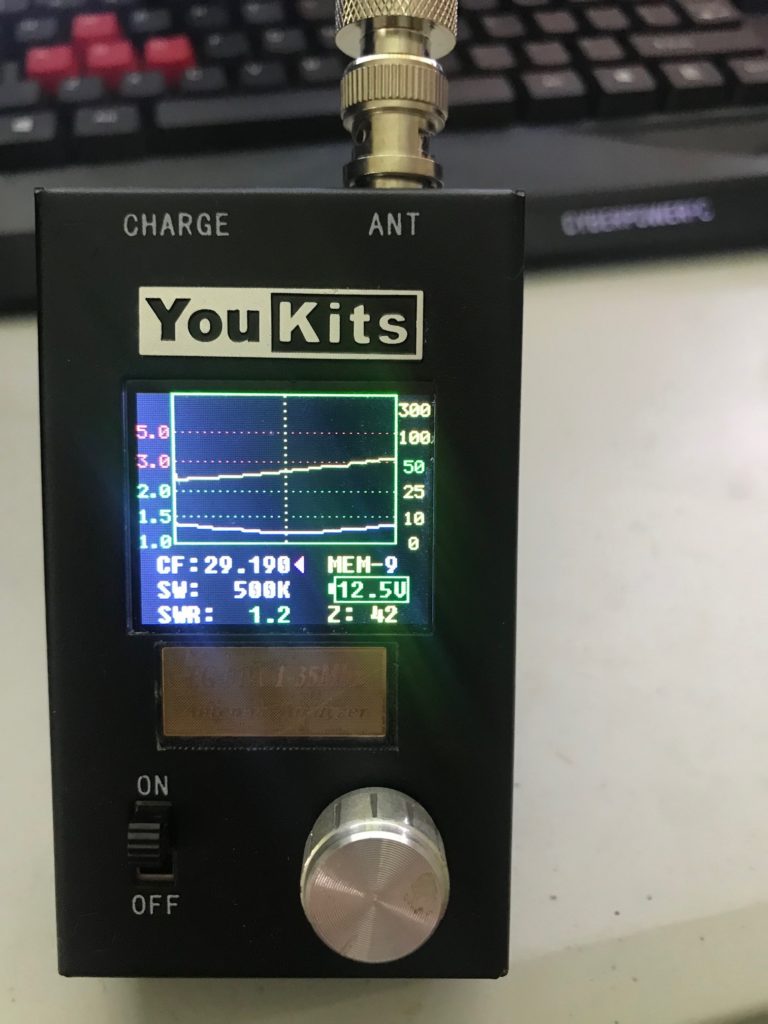
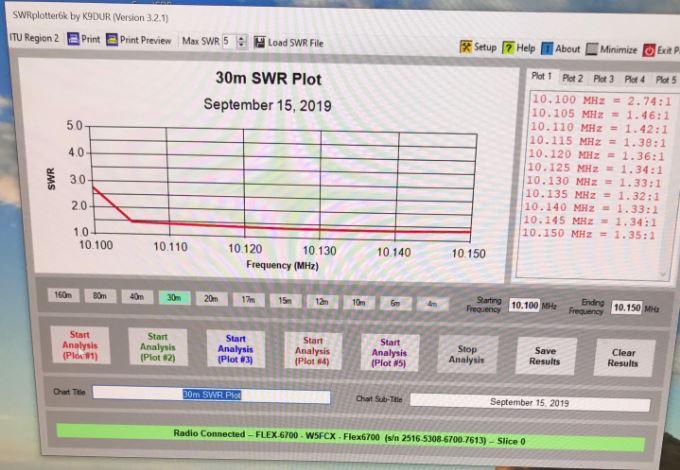
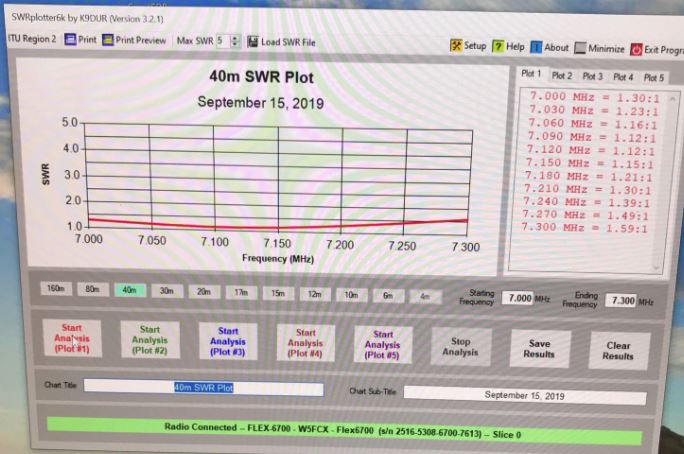
How about an update on the antenna’s good and bad points? I have been considering adding one as an addition to my hexbeam in order to get the lower bands 40,80 etc.
After many years of operation, I can report that I have had no issues with this antenna since it was initially installed. The low-angle radiation has enabled me to work all across the world, typically using about 600 watts to talk or communicate (mostly FT8) globally.
I’m very close to your numbers on centre frequencies.
In most cases, it’s +/_ 400 kHz here and there.
Have you tried hacking bits off/sticking bits on to the tuning rods?
On 10 21 25 12 and 10 metres we need to come 300 khz down which is probably 1.5″ of extra length, and lopping 3″ off the 20m stick.
What are your thoughts on that?
Is it possible to use this antenna on 3rd floor roof top on a aluminium pole 40 feet high?
Thanks 73
Vu3mes
Yes, it is basically a vertical dipole
do you have any issues with antenna being on a fold over mast when lowering ? I will be installing one soon and will be put on a 10ft mast. Im worried about how top heavy this antenna is. Should I worry about the antenna mast itself bending our breaking above the mounting section
It would be nice to see some recent comments since I am preparing to put my Gap Titan into the air soon.
Greg I agree I am in the process of building mine. I will have mine up 7 feet on a tree stump. But directions are horrible with this antenna.
N1xws
iure nesciunt qui aliquid omnis repudiandae. sit incidunt corrupti quisquam fuga sapiente ea omnis non sit inventore quod et dolore suscipit nihil quaerat. explicabo possimus veritatis magni quam eum facilis ex et eum suscipit saepe. iusto ullam recusandae sapiente eaque commodi et unde quasi officia nihil et ut. unde dolorem sit et asperiores ducimus aperiam quia praesentium voluptatem sint consequatur eum rem deserunt.
I was just given one recently from a friend that no longer needed it. He has had it over 20 years, so it is in need of a new 80m capacitor, internal coax and new wires put on. I have found the capacitor is still sold on the GAP website, and the only coax available is for the challenger and voyager, but none for the Titan. Once I can find all of this stuff, I look forward to replacing everything and getting it back on the air. Though when I go to mount it again, I think I will look at mounting it closer to the ground and running the coax through conduit underground and into the house. I can’t complain at all, is it was given to me for free. I just had to come and pick it up.
Quick question though, and maybe it is a short in the coax or something else. Do you use a 1:1 balun or UNUN to prevent RFI? For some reason with mine, on 15 meters, I have horrible RFI coming back into the radio, that I can hear my audio coming through the speaker. I have found a 1:1 UNUN fixed the problem, but many others I have talked to have told me they never had this issue, and was told it is likely a short in the coax or the jumper may not be connected very well. I hate to take it down and it be nothing, because the time I take it down, is when I am getting the replacement parts to do maintenance.
The Gap Titan DX will never work correctly until you get the thing about 45 feet off the ground, if you want good performance on 30 and 40 m you’re going to have to get it 70 ft off the ground, this antenna is a vertical dipole and dipoles do not work very well close to the ground. I’ve had one for many years and I’ve got it 45 feet off the ground and it works perfectly it still does not have Optimum performance on 40, but on 10, 12, 15, 17 and 20 one or two calls gets me through most pile-ups.